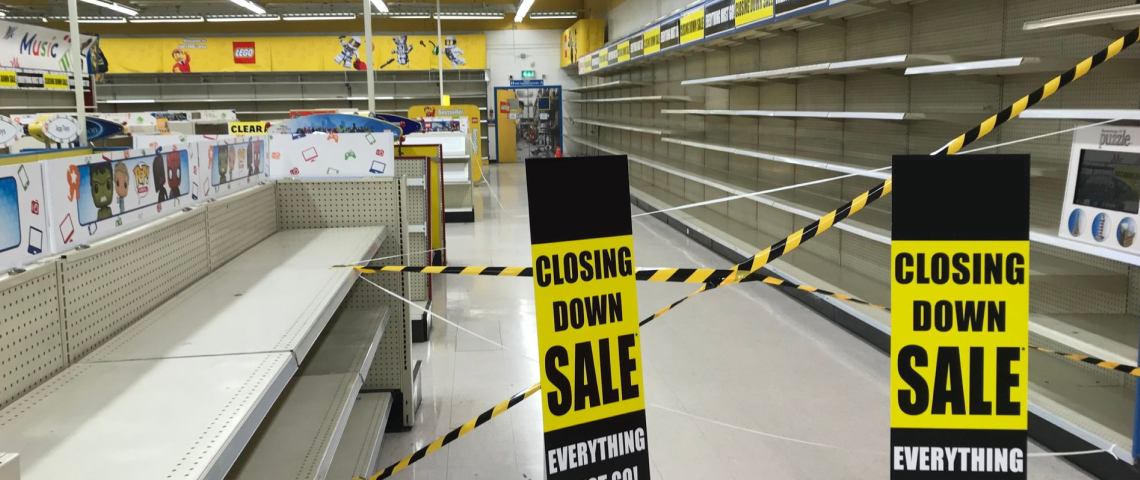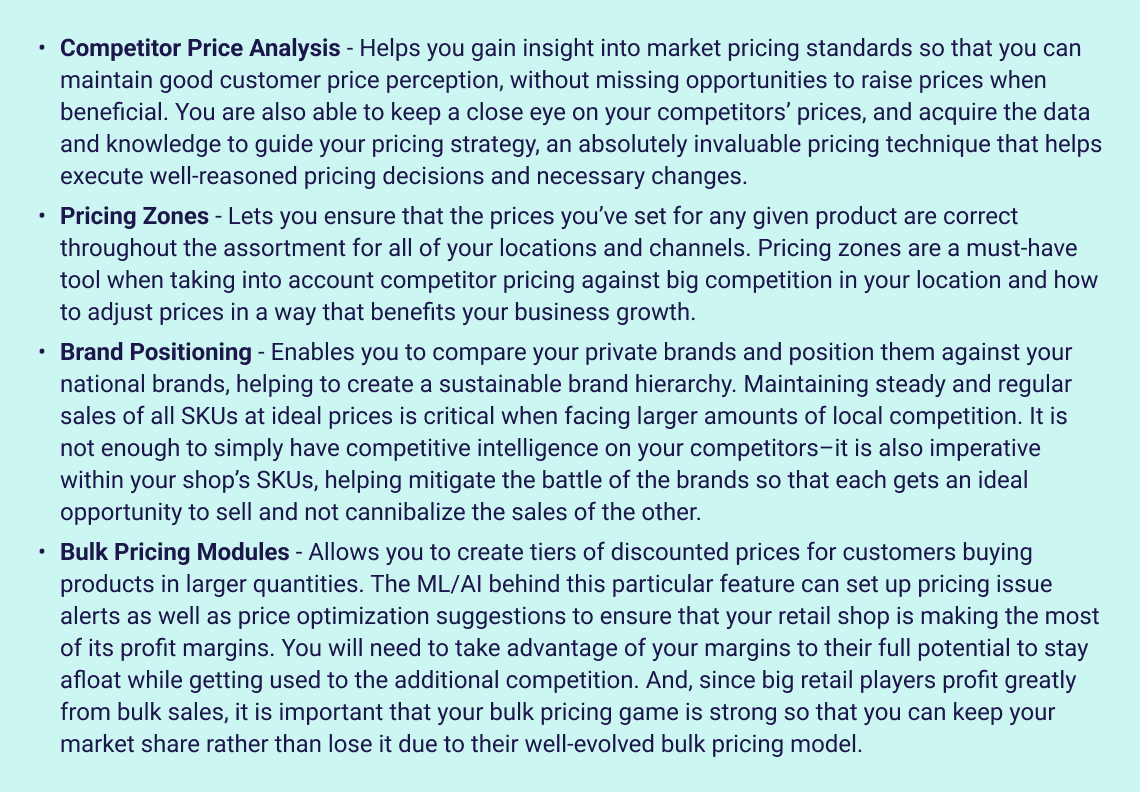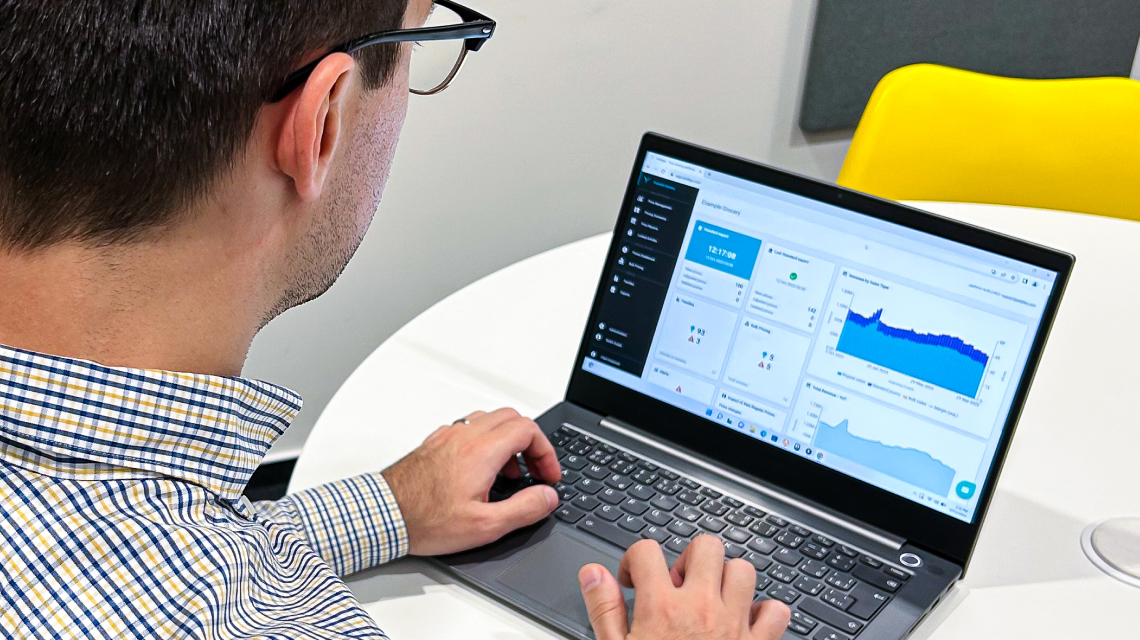5 Actions That Can Save Business When Big Retail Players Establish Themselves in Your Area
The news is out. You knew that this day would come, but as expected, there is no good time to find out that one of the biggest retail players in your industry is about to set up shop in your vicinity. However, all is not lost, and the battle has just begun–there are five concrete actions you can take to keep your soon-to-be top competitor at bay.
Before we dive into the five steps you can take to face your biggest competitor, we will first analyze the three most notable problems that lie ahead for you and the dangers that a well-renowned retail player can bring upon their arrival.
Danger Ahead: 3 Issues You Will Face
1. Withstand the Test of Time
First and foremost, it is important to realize that big retail brands are able to sustain their business for many years, even if they are going into negative margins at a new branch–and they are able to do so as they slowly acquire your market share. The danger here is that they are financially very resilient, and much like a high-stakes poker tournament, they are carrying more chips than the grand majority of their competitors. If you want to stay in this game, you have to make sure that you do not run out of chips, all while ensuring to take some of theirs at every opportunity you get.
In the end, they are able to withstand the test of time. Will you?
2. Change Pricing Strategy and Approach
It should be no surprise that major retail businesses will likely be able to sell the majority of their assortment at lower prices than you. You may be selling 250 grams of cherry tomatoes at the price of 1,10 EUR, but they are able to sell that same 250 grams for slightly less than 1 Euro. And, you likely won’t benefit from trying to go lower than them, so this will require a well-thought out pricing strategy with real-world insights that can help your business know where and when to price high and price low, for example.
The fact of the matter is that they are buying in larger bulk for lower value, so you ought to intelligently and regularly change your pricing strategy and approach to reduce their competitive advantages.
3. Make Your Move Before They Do
Retail business is a constantly-evolving chessboard, and you need to know what your next move is before they do. Falling into a game of cat-and-mouse with a global or regional big player is very dangerous (and they certainly have the financial means to play this game with you), and the only way to not play into it is by knowing how you will adjust your prices without having to wait for their move. Having the right tools for the job is the only way to play this to your favor, and we will discuss some of these features and pricing techniques in the rest of this article.
Whatever you do, be prepared to make your own moves and don’t wait for your competitor to set the new local market standard–with true pricing visibility you will be able to make your best decisions without waiting on them to make theirs.
5 Actions That Can Save Business When Big Retail Players Establish Themselves in Your Area
With the above dangers in mind, let’s now have a look at the five steps your business can take to avoid sustaining considerable damage to your business–or, worse yet, closing down the shop–when a top retail player comes to town.
1. Ditch the Spreadsheets–You Must Advance Your Pricing Techniques
The primary issue behind relying on Excel and spreadsheet-like tools to perform price management is that you will be limited to one pricing list, all while not having access to actionable retail industry insights or other business-critical features.
In our 5 Pitfalls Retail CXOs Face When Not Using Pricing Software article, Yieldigo CEO David Klecka states that 26% of the pricing professionals who participated in our report said that being limited by Excel was the biggest pricing issue they faced when they did not have an advanced pricing solution. This means that more than a quarter of these retail professionals found that Excel was the biggest issue they had in their pricing strategy.
With true pricing competence, you can set different prices for different locations with the best possible outcome for your business, and always be in the know of the most effective pricing approach to every item in your assortment. When competing with the best retail brands in the world, sometimes your prices will have to go high and sometimes they must go low. But, the fact of the matter is that Excel won’t help you figure out when and where you should play the high-low pricing game.
Last but not least, when LIDL, Ikea, Tesco, and other such retail leviathans come to town, it is certainly not helpful to waste time with manual spreadsheet errors. Now is the time to not only take fast action, but action with some bit of certainty, clarity, and control over the final outcome.
2. Access Your Historical Data to Make Well-Informed Decisions
Data, data, data–if in case you didn’t know, you are sitting on a literal goldmine of data and you may not know how to dig for it!
You have a transactional history within your data logs and it is gold that you must leverage against your toughest competitors. To not do so is not only leaving money on the table, but giving it away to the competition–at bare minimum, it is poor use of some of your best resources if you are not digging into it and putting it to work.
Your previous sales successes and failures are precious information that will help guide future pricing, promo, and markdown decisions. A competent pricing tool will help you excavate for the gold in your historical data. By extracting this data gold, you will be gaining key insights into your customer behavior, success of past promotions, well-executed markdown opportunities, and when to raise and lower prices in a way that positively impacts your margins.
Most importantly, the big retail players don’t have customer behavior transaction data in your specific location yet, but you do! As a longer-standing local business, you have the home advantage necessary to stand up to big retail in what can likely become a David vs. Goliath battle. Understating the behavior of your local customers gives you a big advantage over your competitors, no matter how large or lucrative they are. By knowing what works best in your location, you already have a significant advantage that can keep your business thriving for many years.
3. Apply Data Strategically to Test Different Approaches
You have hundreds if not many thousands of SKUs (products), but without a modern pricing tool you don’t have access to actionable data and figures that help you make decisions on what pricing strategy to apply to all of these products individually. The reality you must face is that this is not a limit you can permit yourself once you know you will soon face the toughest competition your business has ever had.
Once you analyze your data as mentioned above, you then must put it to use by implementing the data to test various pricing strategies. Using price management tools like what-if simulations allows you to test various different strategies and approaches before you act upon them. This AI/ML-capable technology is the core of price management, and is part of the pricing prowess you gain that will help fend off the competition.
Apart from what-if simulations, pricing solutions also come armed with more strategic tools such as competitor price analysis, pricing zones, brand positioning, and bulk pricing modules, amongst others. Here is how you can use these features to build your pricing strategy:
4. Get Creative with Your Data and Take Smart Risks
Getting creative with data does not mean that you need to hire a particularly astute data analyst, nor that it will require new and unaffordable resources. It means that you need to apply your data creatively using tools like price elasticities that can help you to genuinely boost your margins. So, what are price elasticities?
Price elasticity helps businesses fully consider customer price sensitivity and trends within their behavior. Within the history of a business’s transactions, price management systems can find price elasticities and cross-elasticities based on purchasing behavior patterns through data modeling and statistics. With these patterns of data, there are goldmines of figures available to price managers and the board of directors making executive decisions, which can really boost margins.
By using price elasticities you will be able to come up with ingenious pricing strategies that won’t harm the sales volume of your SKUs. The transactional history and all of the data around it gives you information that can be used to perform pricing elasticity magic that will work against your competitor–essentially, you are leveraging your transaction history against your competitors.
Smart Risks in Pricing Strategy Go A Long Way
Just for the sake of playing devil’s advocate, many would argue that price elasticities are a bit of a “crystal ball” feature with no absolute or truly conclusive figures–there are simply too many different factors affecting sales of individual articles that it would be impossible to reliably quantify them all. Not true–when used correctly, price elasticities can achieve amazing results by cleverly combining multiple complex data models that take into consideration all of the important factors affecting your customers’ purchase decisions. That allows you to estimate the scale of those factors and how you can use them to make intelligent, well-informed price adjustments based on real-world scenarios and hard data.
In the end, customers’ past purchasing behavior is the fundamental learning material that you can apply creatively to your pricing strategy. After changing prices, the customers will have different purchasing behavior, and with this captured data you can make further price adjustments to learn more about your customers. You are taking smart risks that will give you a competitive edge that you cannot be without when battling top retail businesses near you.
5. Understand Your Data to Create A Flexible and Proactive Pricing Strategy
Do you understand what your data means, and what the creative ways that you plan to use it in implies?
Because without having a true understanding of the meaning of your data, those price elasticities and all of the reliable and actionable figures and hypotheses you have generated around it will be meaningless, unfortunately. In the end, simply scraping data against your competitors is not enough as it is just one piece of your overall pricing strategy! You must understand and apply your data accordingly in order to get the desired results from it, and make what knowledge you have about your competitor count.
And, that’s it! Take the bull by the horns by creating your new pricing strategy built via true pricing competence and visibility. Put your data gold into action through a viable pricing strategy that will help you fight off even your biggest competitors, and always ensure that you are maintaining a close eye to every new step and action you take to ensure that it is generating the results you expected. By doing all of the above, you will be taking every possible step to keep your retail business thriving so that you can respond accordingly to your strongest competition.





